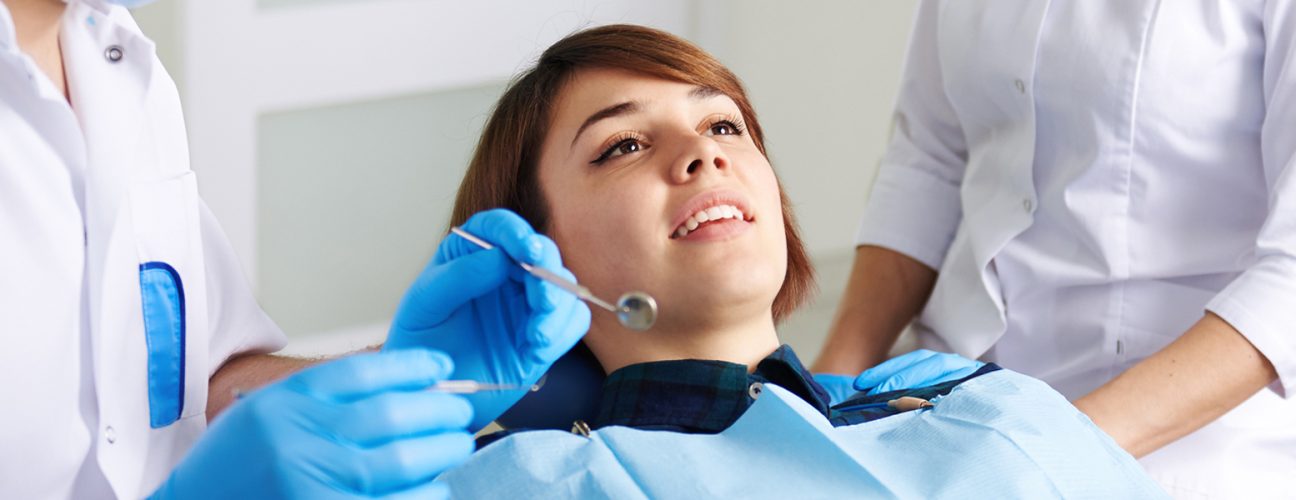What to Expect While Your Ongoing Dental Cleaning
September 1, 2025Stepping into the dental chair can feel uncertain, but it doesn’t have to. Whether you’re overdue or just curious, understanding what happens during a dental cleaning takes the fear out and brings clarity in. This blog walks you through every step, so you feel informed, relaxed, and ready for a healthier smile without the guesswork.
Why Regular Dental Cleanings Are Important
Though it might not seem like much, skipping dental cleanings adds up over time. It’s possible that you won’t notice the accumulation until it hurts or damages your body permanently.
This is why it’s important to maintain cleanliness:
- Plaque develops quickly. While brushing twice a day is beneficial, it is not a complete solution. An expert is required to remove tartar, which is formed when plaque remains on the surface for an extended period of time.
- Your general health is linked to your gum health. Gum inflammation links to heart disease, diabetes, and even cognitive problems.
- Cavities can form silently. You might not feel pain until the tooth is already damaged.
- Bad breath has a cause. Regular cleanings can take care of that cause and save you from awkward moments.
- A healthy smile builds confidence. Feeling good about your teeth affects how you carry yourself.
Most of all, dental cleanings help catch problems early, prior to them turning into bigger, more expensive issues.
How Often Should You Get a Dental Cleaning?
It depends on your oral health, age, and any specific concerns your dentist brings up. But here’s a general guide:
- Every six months is the gold standard for most adults.
- Every three to four months, if you have gum disease or a history of recurring problems
- Annually, only in rare cases with perfect dental health and a dentist’s recommendation
Not sure where you stand? Ask a dentist near you for a personalized recommendation. They’ll take your full dental history into account.
What Happens During a Routine Dental Cleaning?
A lot goes into what might seem like a simple cleaning. The visit breaks down into several key steps:
1. Initial Exam
The hygienist starts with a quick inspection of your teeth and gums. They’ll use a small mirror to check for swelling, decay, or other red flags.
2. Plaque and Tartar Removal
Using a tool called a scaler, they carefully remove hardened tartar. This part usually doesn’t hurt, but you will hear scraping. It might take longer if you have more buildup than normal, but it’s all doable.
3. Cleaning with Gritty Toothpaste
Your teeth are brushed with a particular gritty paste after the tartar has been removed. This aids in surface polishing and debris removal.
4. Expert Flossing
Even if you floss every day, a hygienist goes deeper and reaches the spots you might miss. This also helps uncover spots where your gums may bleed, an early sign of gum trouble.
5. Rinse and Fluoride (Optional)
A rinse washes out any leftover particles. Then, if needed, they may apply a fluoride treatment to help protect your enamel.
Every step happens with care. Your comfort matters, and a good hygienist will check in with you during the process.
Does a Dental Cleaning Hurt?
Most people don’t feel any pain. But it depends on a few things:
- How long has it been since your last cleaning
- Whether you have sensitive teeth or suffer from gum disease
- Your tolerance for dental tools and noises
You might feel mild discomfort during scaling, especially near the gumline or if tartar has built up. But it’s not sharp pain, more like pressure or a scratchy feeling.
Tip: If you’re worried, speak with a trusted dentist in 77504 before the cleaning begins; they’ll explain the process and help ease any concerns. They’ll slow down, use numbing gel if needed, or walk you through each step to help you feel relaxed.
How Long Does a Dental Cleaning Take?
A routine dental cleaning usually lasts 30 to 60 minutes. Here’s what can affect the time:
- First-time patients – expect closer to an hour, including the exam
- Lots of tartar buildup – may require more scaling and time.
- Follow-up questions or extra X-rays – also add a few minutes.
Most dental offices try to keep things running on time. If you go to a dental clinic near you, check if they offer online forms or flexible scheduling that can save you time on the day of the visit.
What If It’s Been a Long Time Since Your Last Cleaning?
First of all, no judgment. Life happens. Maybe you’ve moved, had a baby, lost insurance, or just put it off. That doesn’t mean you should avoid going now.
Here’s what to expect if you’re returning after a long break:
- Longer appointment: There’s usually more to clean, and the hygienist will go slow to avoid irritating your gums.
- Extra x-rays: The dentist will want a complete picture to check for decay or bone loss.
- Gum evaluation: They’ll check for signs of periodontal disease, especially if you’ve had bleeding gums or bad breath.
You may be in need of a deep cleaning (also called scaling and root planing), which goes beneath the gumline to remove bacteria. If that’s the case, the dentist will explain everything before starting.
Most patients say they feel relieved after the visit.
Final Thoughts
A healthy smile starts with a simple step: showing up for your cleaning. At Portal Dental Pasadena, we make that step easy and stress-free. Whether you’re due or overdue, we’re here to help you feel confident in your care. Book your appointment today and take the first step toward a cleaner, brighter, healthier smile you’ll feel good about.
